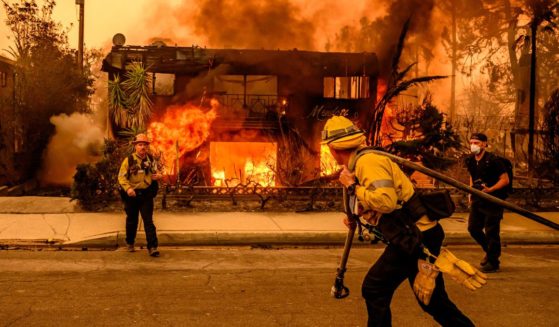Report Exposes Major Flaws in Mail-In Voting, Could Change Outcome of Election
If there’s one hard-and-fast rule that has been set for conservatives during the unusual 2020 election process, it’s this: Don’t step into the mail-in voting minefield.
There’s an official line that’s been set. Mail-in voting is terrific. It’s better than in-person voting, in fact. Why don’t we make it this easy all the time? It’s the greatest thing to happen to liberty and freedom since the Magna Carta.
Every time you express the slightest doubt about the mechanics of national mail-in voting and whether it could affect the results of the 2020 election, the soul of the Rev. Martin Luther King Jr. sheds a single tear in heaven.
For the humor-challenged, this is what the kids like to call hyperbole. I don’t feel bad engaging in it because, well, everyone engages in hyperbole when they’re talking about mail-in voting.
I’ve noticed a trend behind almost every argument I read on social media regarding the issue: If you aren’t making the most extreme case for your position, so extreme that it verges on self-parody, all the while claiming you absolutely know every one of the pertinent facts about the process and how they all line up in your favor, you’re doing it wrong.
This puts me in an odd position because my opposition to universal mail-in voting comes from a place of caution about an untried process.
It’s that I merely know that we can’t know what’s going to happen when the tortoise-like evolution of America’s electoral process over 232 years is completely upended in the space of about six months because we’ve concluded there’s no way to socially distance during the in-person voting process. (Even though there’s no evidence in-person voting increases COVID-19 risk.)
We want every American to be able to place his or her vote via mail without knowing what the implications of that are — assuming we’ll end up with the same result we would have otherwise.
The proof from proponents of universal mail-in voting that it’ll be foolproof comes via a small number of states that automatically send registered voters mail-in ballots.
According to The Washington Post, those states are California, Colorado, Hawaii, Oregon, Washington and Utah — only one of which, Colorado, has even the slightest chance of being a presidential swing state this November. (And even that’s exceedingly unlikely — President Donald Trump would be well-advised not to go near there except to support incumbent GOP Sen. Cory Gardner, who faces an uphill re-election battle.)
While you can request an absentee ballot in most states — either without giving a reason or by listing fear of COVID-19 as a reason — and a number of states have expanded absentee voting access, that’s not quite a barrier-free mail-in voting system. Rest assured, you’re going to see that pushed for over the next few months, and hard.
So what’s the big deal?
Well, CBS News decided to run a controlled test of what might happen if there was widespread mail-in voting this November.
In Philadelphia, Tony Dokoupil of “CBS This Morning” took 100 mock ballots and mailed them in different parts of the city to an address that had been set up as a mock board of elections.
In the experiment, 21 percent of one of the batches of ballots didn’t arrive after three days.
According to the report, three percent didn’t arrive at all.
If 3 percent sounds like a small number, consider that Pennsylvania was decided by a 0.7 percent margin back in 2016.
They did get “a birthday card from Mike to Ronnie,” though, so there’s that.
Trump shared the video Wednesday on Twitter and waded further into the fray shortly after, sending this tweet:
Mail-In Voting is already proving to be a catastrophic disaster. Even testing areas are way off. The Dems talk of foreign influence in voting, but they know that Mail-In Voting is an easy way for foreign countries to enter the race. Even beyond that, there’s no accurate count!
— Donald J. Trump (@realDonaldTrump) July 30, 2020
As for mail-in voting being “an easy way for foreign countries to enter the race” — well, as Wikipedia might put it, that’s very much [citation needed]. In terms of the problems with an accurate count and “testing areas [being] way off,” while the Philadelphia test was just one experiment, it also wasn’t a promising one.
Keep in mind, this test only measured whether a mailed-in ballot arrived at the “board of elections.” The problem with the conditions is that the U.S. Post Office would be involved both ways — meaning the same service that didn’t deliver 3 percent of the ballots was also assumed to have a 100 percent record delivering those ballots to voters in the first place.
And this test happened during a period where the USPS wasn’t being swamped with ballots — which it would be during the election. Whatever mistakes are present now would be magnified then.
This is to say nothing about problematic practices such as “ballot harvesting” — the ethically questionable practice where third parties are authorized to collect mail-in ballots, something Democrats used to great effect during the 2018 midterms — and other potential unforeseen issues with the system.
By the way, Democrats should be concerned about this, too.
The Washington Post reported in May that “voting by mail increases the number of ballots that are rejected — and not counted in the final tally. And ballots from younger, minority and first-time voters are most likely to be thrown out.”
In liberal California, The Associated Press reported over 100,000 mail-in ballots were rejected during the March primary, roughly 1.5 percent of ballots sent in by mail.
Why does this happen?
“It’s not entirely clear,” The Post reported in May. “On the one hand, there may be reasons some groups of voters are more likely to make mistakes when voting by mail. Many new voters — for example young and first-time registrants — may be unfamiliar with how to vote by mail, or not know how much postage is required or how far in advance to return the ballot to have it arrive on time. Mail voters don’t have the benefit of interacting face-to-face with poll workers who might be able to help them navigate any difficulties.”
There’s too much we don’t know about the system.
A basic test, just seeing how many of the ballots could be delivered if and assuming the ballots got to the voters and were mailed on time during a period where the system was working efficiently, found 3 percent didn’t arrive.
If that happened in November on a massive, national scale, it could be the kind of major flaw in a system that can change an election.
That’s not making an extreme case for anything. It’s merely stating some very inconvenient facts about a process we’ve been assured is 100 percent safe.
Truth and Accuracy
We are committed to truth and accuracy in all of our journalism. Read our editorial standards.
Advertise with The Western Journal and reach millions of highly engaged readers, while supporting our work. Advertise Today.












